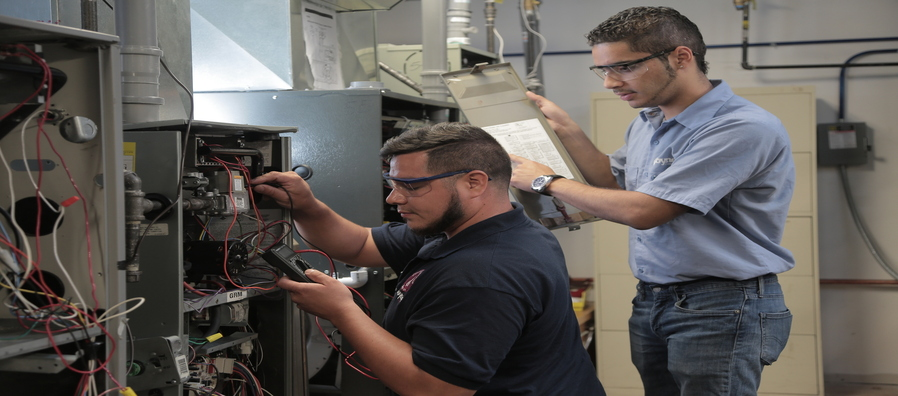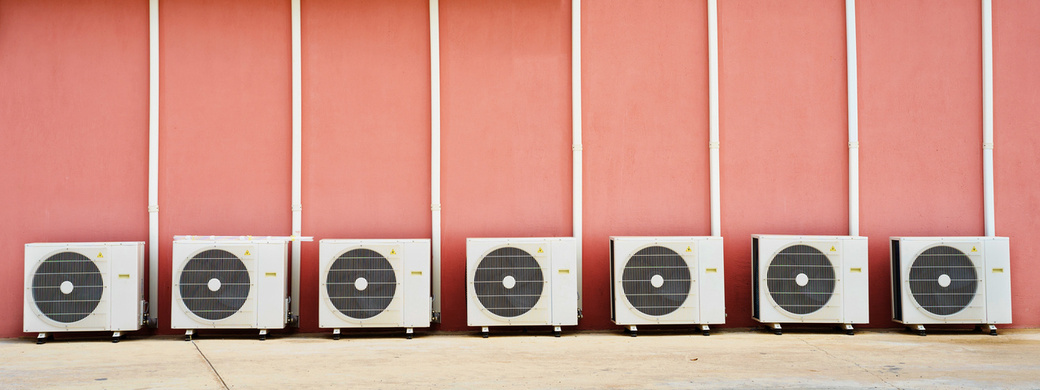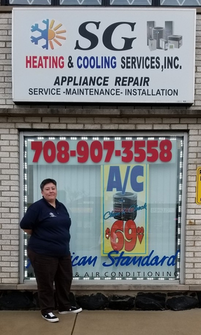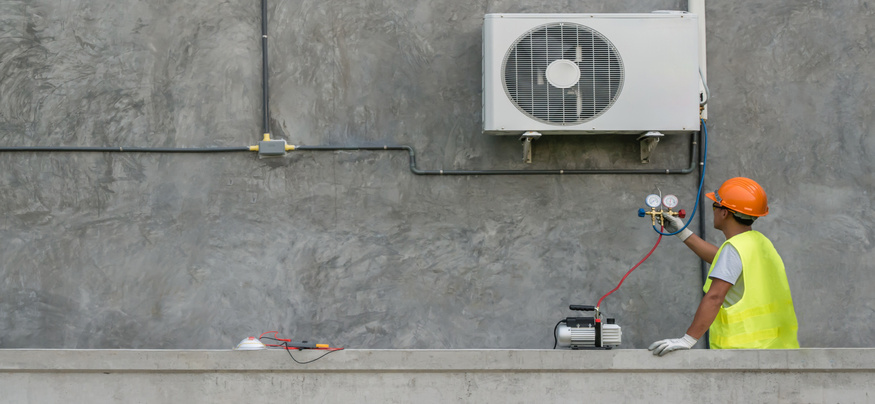Chicago weather runs a range of seasons and weather conditions, sometimes within a span of 24 hours. That means high-performing HVAC systems that can be started at the drop of a hat are key to maintaining comfortable indoor conditions. However, they can’t optimize your home’s comfort if they don’t work or need repair. Repairs can set you back hundreds of dollars, depending on the severity of the issue. To avoid such pitfalls, here are a few DIY HVAC maintenance tips and tricks you can use to keep your air conditioning and furnace units running at peak efficiency and save you money in the long run:
Clean or Replace the Air Filter
A dirty air filter can severely hinder your HVAC system’s performance, so it is important to check the filter regularly. If your filter is a reusable one, simply wipe it down with a damp cloth. If it’s a disposable one, head to your local hardware store. It’s a good idea to bring the old one with to ensure you get the right kind.
Recommendations of how often to clean or replace filters vary depending on whom you ask, but a good rule of thumb is at least once a season, or three months. Filters with higher Minimum Efficiency Reporting Value (MERV) rating need to be changed more often because they trap more contaminants in the filter. Regardless of how frequently you decide to check your filter, keeping it clean can help prevent costly repairs going forward.
Furnaces also have filters that need to be checked and replaced regularly. Every three months is a good benchmark for furnace filters as well.
Clear Debris from the Condenser and Clean the Coils
The condenser, which is the part of your HVAC unit that is outside your house, can get pretty dirty and collect debris such as grass, leaves and cottonwood seeds. To clean the condenser, you should first turn the unit off. Remove the panel to access the inside, and use a wet/dry vacuum to suck out the debris. It’s also a good idea to clean off the coils and hose down the fans. When you’re done, reattach the access panel. You should also ensure the unit is level, as a lopsided position can lead to problems and costly repairs.
Maximize Air Flow
There are additional steps you can take to help optimize your air flow. For example, you should clear the area around your condenser. This will allow for better air flow into the condenser and help reduce the likelihood of debris buildup. You should also keep your windows and doors closed, as having them open defeats the purpose of your unit running!
Program Your Thermostat and Leave It Alone
Most modern thermostats are programmable and can be set to change temperature based on time of day and other factors. This makes it easy for you to control the temperature in your home without constant involvement. Programming your thermostat to your preferred settings and letting it run also helps maximize your unit’s efficiency. That’s not to say you shouldn’t ever adjust the settings if they need to be changed, but constantly fidgeting with the thermostat’s settings causes the unit to work harder. This extra work will end up costing you more money.
Check the Flame
Most of these tips have been geared toward air conditioning, but these last few will shift to the “H” in HVAC: heating. Furnace flames, powered by either natural gas or propane, should burn blue. If they burn a different color, such as yellow or orange, it could signal a combustion issue and you should call a professional to look at it. Improper combustion can result in the furnace having to work harder, which raises your monthly bill – not to mention, your air could be contaminated with carbon monoxide.
Regularly Check Carbon Monoxide Detectors
Even if you don’t have a furnace, your home should have both smoke and carbon monoxide detectors. If your home has a furnace, the need for these lifesaving devices is amplified, as they can help detect problems with your furnace, such as any issues with the exhaust pipe that leads outside or cracked heat exchangers. It’s important to ensure the detectors are working properly and to replace their batteries as needed. When their batteries need replacing, of the unit will emit high-pitched beeps. Carbon monoxide detectors should be installed outside of the bedrooms in your home.
Check the Condensate Drain Line
High-efficiency furnaces often create condensation as a product of their operation, specifically building up in the exhaust pipe. To rid the system of the water, a condensate drain line runs from the furnace into the ground. You should check to make sure there are no cracks in the pipe, because cracks could mean the water is ending up somewhere other than in the ground.
It’s important to make sure the pipes don’t freeze during the winter months. In the event that the line is frozen, you can heat it by pouring hot water over the pipe. Having a vertical pipe or one that is insulated helps minimize the risk of freezing.
These practices can save you money and help you live more comfortably when performed routinely. If these techniques are of career-aspirational interest to you and you’re not already in the HVAC field, consider enrolling in an HVAC trade school program near you.
Master the HVAC Trade at Coyne
Coyne College is one of Chicago’s premier trade schools, offering an HVAC-R program designed to equip students with the skills and knowledge they need to build successful careers in the field as HVAC technicians.
While enrolled as a student in Coyne’s HVAC-R program, you will actively engage in learning the finer points of the occupation. Classes in the HVAC-R curriculum include:
- Introduction to Mechanical Refrigeration Systems
- Air Conditioning, Electric Heat and Heat Pumps
- Introduction to Commercial Controls
- Gas Heating
- And more
You will learn the ins and outs of the HVAC technician trade in a setting designed for your individual success. Coyne’s highly knowledgeable instructors have years of professional experience in the field and will pass their in-depth knowledge on to you.
Hands-on learning is a significant part of Coyne’s HVAC-R program, and rightfully so, but it is also mixed with theoretical components so students learn why they are doing what they are doing.
Coyne is proud to offer day and night options in order to best accommodate students’ busy schedules. The HVAC-R program is taught at Coyne College’s campus in the Chicago Loop at the intersection of State and Madison (known as “the world’s busiest corner”).
With more than 110 years of experience in helping aspiring skilled trade professionals build the foundation of their careers, Coyne College has a well-developed network of resources to help students gain employment after graduation.
Coyne College offers its student’s career assistance, including mock interviews, externships and resume help. These resources can help students secure apprenticeships after completing the program.
To schedule a visit, contact an advisor or request more information about the program, please visit https://www.coynecollege.edu/contact.






